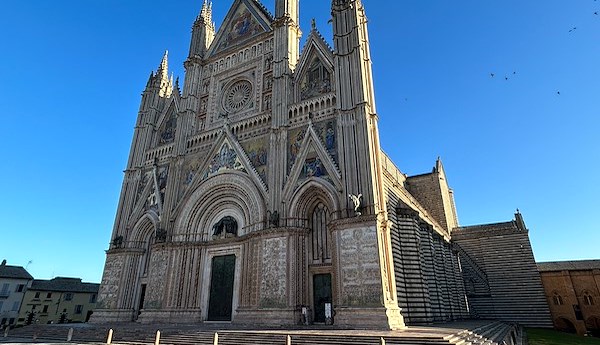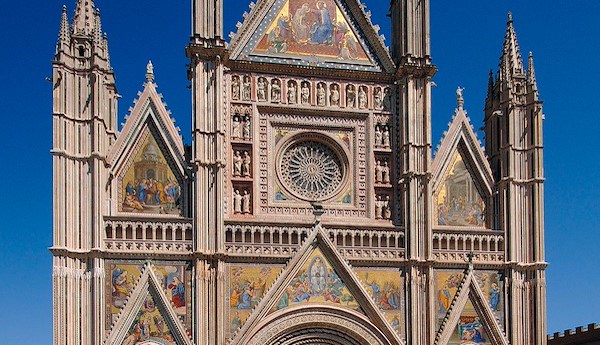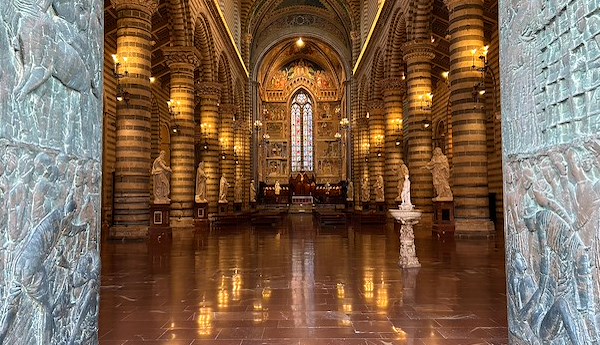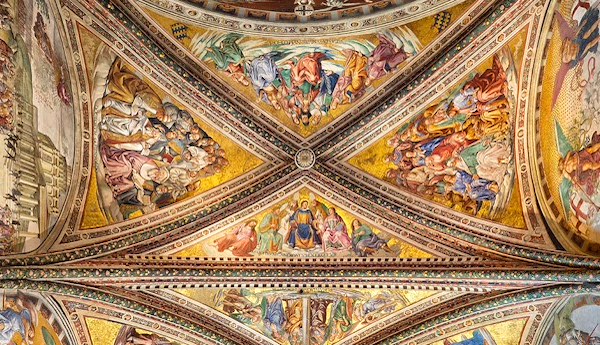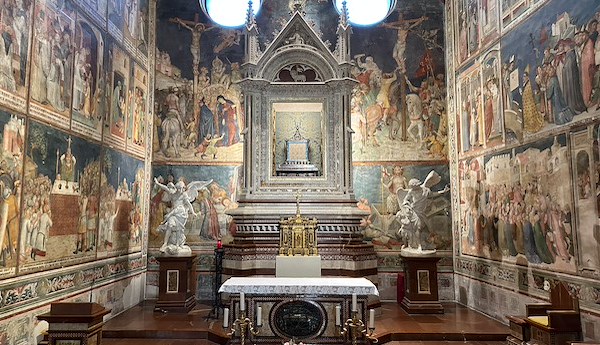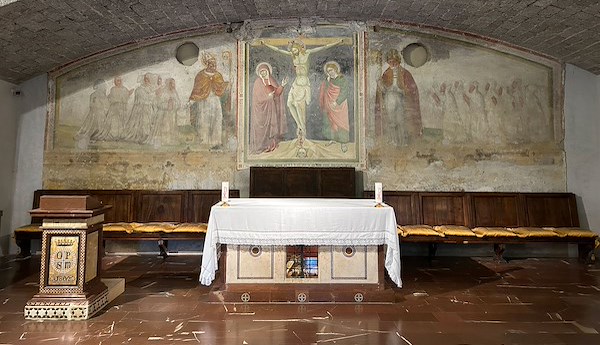Duomo of Orvieto
The Duomo of Orvieto is a masterpiece of Italian Romanesque-Gothic design, celebrated for its harmonious fusion of architecture, sculpture, decorative arts, and painting.
The origins
This monument honours the Virgin Mary assumed into heaven, standing as an example of Italian Romanesque-Gothic architecture and a symbol of Orvieto.
The façade
A masterpiece of Italy’s Gothic art. The works of the façade started around 1310 and ended in 1532.
The interior
Columns and pillars divide the Duomo into three naves. The ten small apses on both sides once housed Baroque altars, which were destroyed in the late 19th century to bring the Duomo back to its original structure.
The Chapel of San Brizio
This chapel, known for the series of frescoes depicting the Stories of the Last Days, was started by Fra Angelico in 1447 and completed by Luca Signorelli in 1499-1504.
The Chapel of the Corporal
Built in the mid-14th century, this chapel owes its name to the relic of the Sacred Altar Linen of the Miracle of Bolsena preserved here.
The crypt
The crypt is actually an oratory, which was once connected to the transept through two flights of stairs. In the mid-14th century, it became a burial place, and most parts of it were frescoed.

 ITA
ITA

